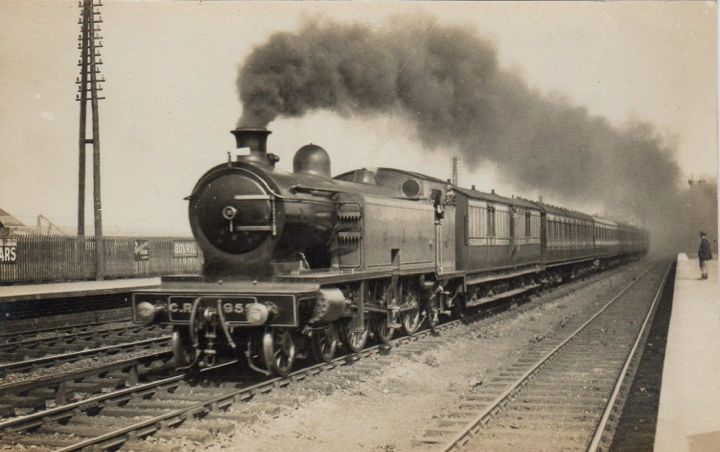An express boat train from Glasgow Central bound for Wemyss Bay is shown passing through Cardonald Station on the fast line in June 1922. Looking at this photograph, I am reminded of the fierce competition that used to take place between the railway companies in an effort to achieve the fastest journey times between Glasgow and the Clyde resorts.
Long straight sections of track were laid along parts of the Caledonian Railway’s Inverclyde Line, including through Cardonald, to enable higher speeds and faster journey times to Gourock and Wemyss Bay. Once the railway companies owned their own steamers, then the races could begin in earnest. Time was of the essence, and the sooner the train could arrive at the railhead and passengers be rushed onto the waiting steamer, then the race could continue on the water. Depending upon your constitution, this part of the journey could be either thrilling or terrifying.
The competing steamers would often be in close proximity to one another, sometimes even side by side. One can imagine the captains yelling instructions to their engineers to give them more speed, and the heat generated down below as the stokers were busily shovelling coal into the furnaces. Passengers would be moved around the decks if the master thought it would improve the trim of the vessel. The companies recording the fastest times to their destinations would use this in their advertising to promote their business and try to gain an advantage over their competitors. This fierce competition reached its peak in the 1890’s and continued apace into the new century, tailing off around 1909 for budget reasons, and then the Great War intervened. The races resumed briefly during the 1930’s, but to a much lesser degree.
It’s interesting to reflect on the fact that a myriad of boat trains used to depart Glasgow daily for ports on the West Coast. There were trains from Glasgow Central bound for Gourock and Wemyss Bay; from St. Enoch’s for Greenock Princes Pier, Ardrossan, and Stranraer; and from Queen Street for Craigendoran, Helensburgh, Oban, and Mallaig. There was even a named boat train, the “Irishman”, which ran from St. Enoch’s to Stranraer Harbour and back between 1933 and 1967.
For reference, the locomotive featured in the photograph is No. 955, the last in a class of 12, 4-6-2 passenger tank locomotives designed by William Pickersgill for the Caledonian Railway. It was built in 1917 by the North British Locomotive Company at their Hyde Park Works in Glasgow.

